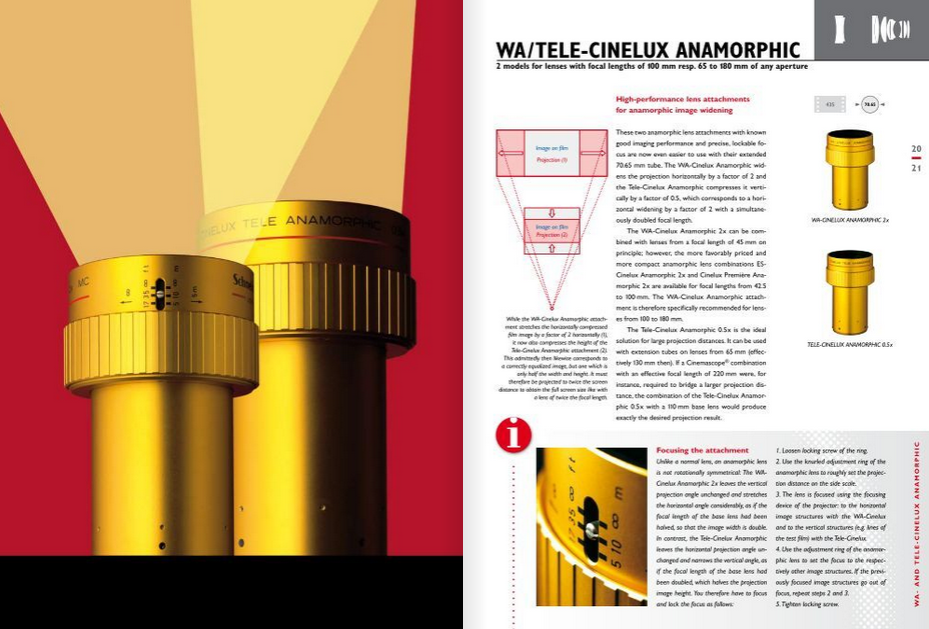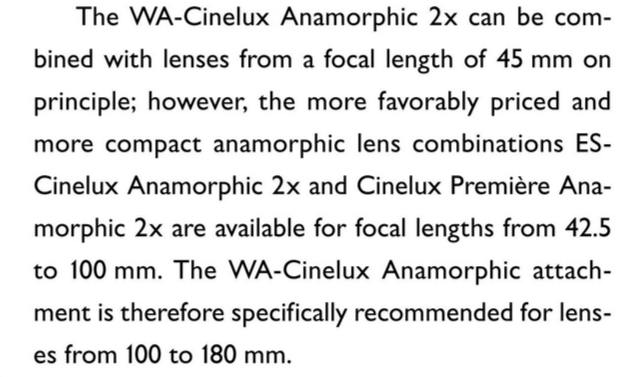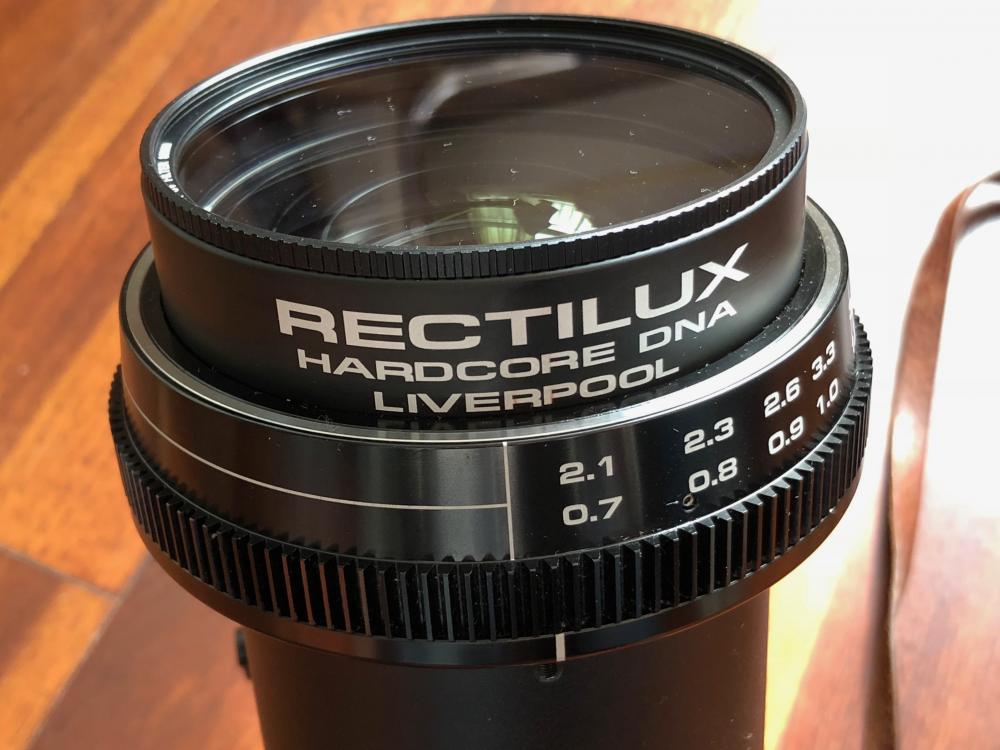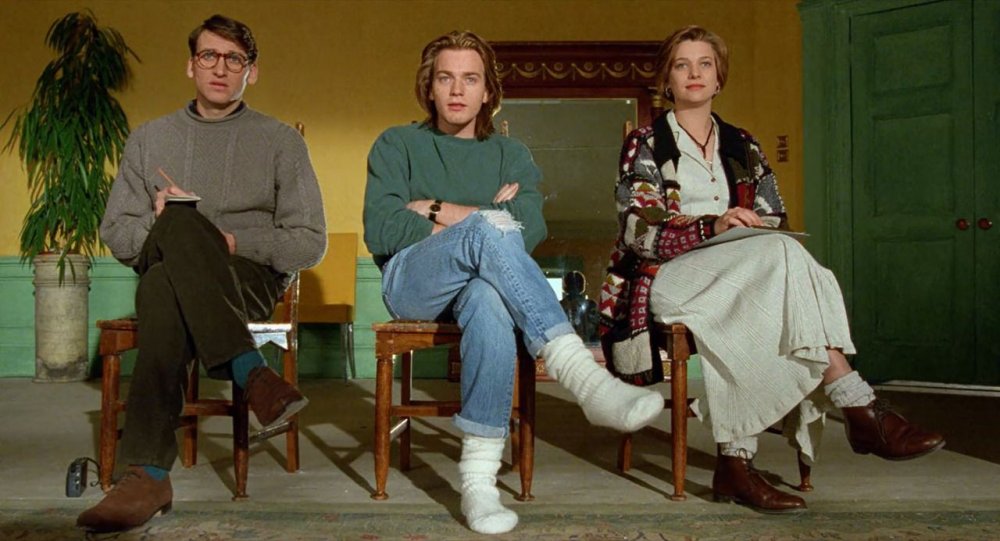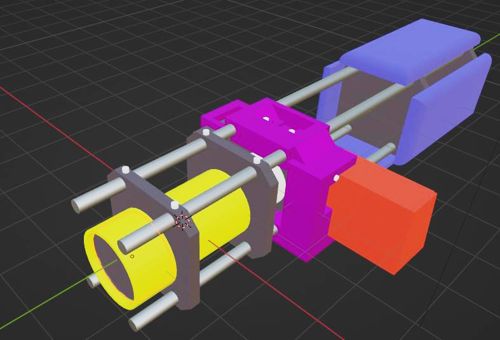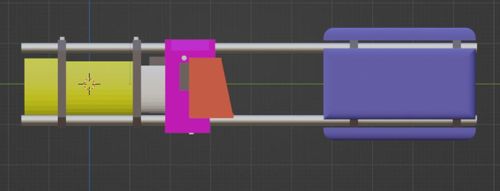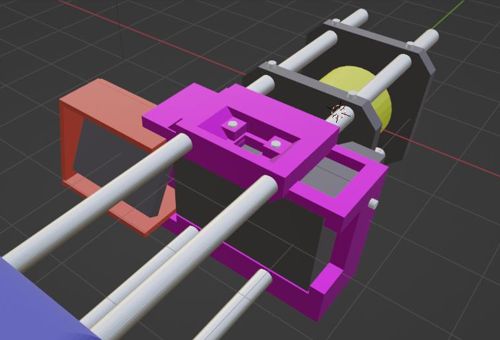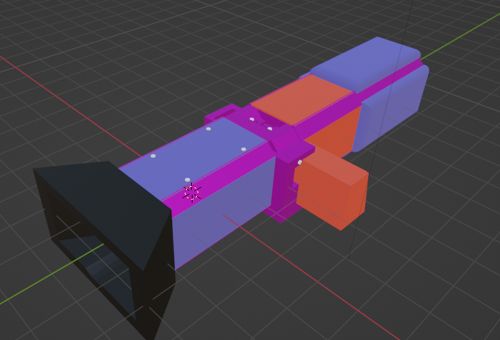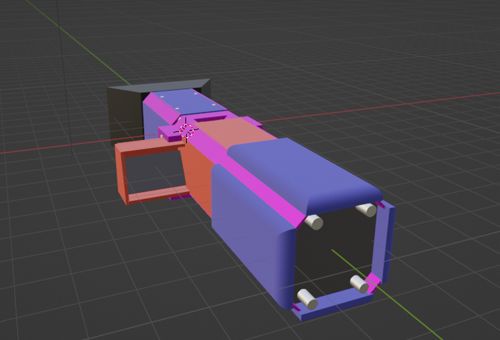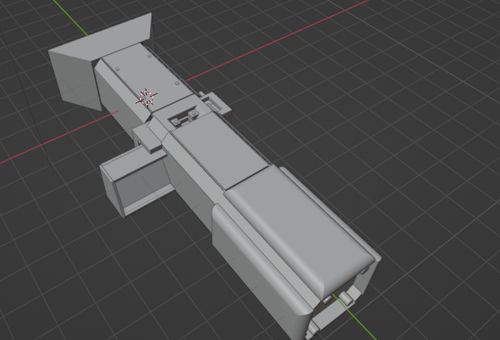-
Posts
21 -
Joined
-
Last visited
octoplex's Achievements

Member (2/5)
7
Reputation
-
syands1619 started following octoplex
-
You're absolutely right. The cost-savings that result from Apple knowingly using child-slave labor to manufacture the iPhone are incredible. Apple passes these amazing cost-savings straight onto the consumer, allowing Apple to undercut companies that use adults to manufacture cameras. This is why Apple is one of the richest companies in the world. Child slaves are pure profit for Apple, and the average consumer loves their child-slave-manufactured iPhone. Of course, the consumer is a surveillance-node; so also a kind of slave. In a way, it's perfect karma. Built by slaves; used by slaves.
-
 Thpriest reacted to a post in a topic:
Will The Creator change how blockbusters get filmed?
Thpriest reacted to a post in a topic:
Will The Creator change how blockbusters get filmed?
-
UPDATE: I have managed to locate an old Schneider brochure from around the time this lens was manufactured. The Cinelux WA I have appears to have been a top-of-the-line item. The brochure may be of great interest to anyone else who is adapting a Cinelux lens of this era. This is good news, as far as the likely-quality of the lens goes, but there's not a huge amount of technical detail in the brochure. This is pretty much all it says about the WA edition:
-
The technical merits of Apple's new iPhone are irrelevant when two major factors are taken into account: 1) The iPhone is a surveillance tool. Their ARM implementation is a black-box. 2) Apple knowingly uses child slave-labor, as reported by Business Insider. This will likely be an unpopular perspective because, as consumers, we must live in a constant state-of-denial regarding the reason Apple is so profitable: Namely, that they are documented child-slave traders and exploiters. Personally, when I stack up the performance of the new iPhone's optics against, for example, an Arri, I have to bear in mind that the Apple camera-system is demonstrably made by child-slaves in communist China, and the Arri is made by fully-grown adults in Germany. I understand that others may have a different purchasing criteria, but for me the child-slavery thing is a deal-breaker. I like my cameras made by adults. Call me old-fashioned.
-
 octoplex reacted to a post in a topic:
Sony Burano : a groundbreaking cinema camera
octoplex reacted to a post in a topic:
Sony Burano : a groundbreaking cinema camera
-
Incidentally, the reason why the length of the taking-lens is important in this type of adapted-movie-theater-anamorphic-lens set-up is because of the vignetting-risk. Wider taking-lenses are more prone to capturing a vignette because the field-of-view may partly reveal the housing of the anamorphic-block and/or the variable-diopter single-focus system. That said, this particular Cinelux WA anamorphic-block appears larger at the front element than the back element; I would speculate this slightly reduces the vignette-risk. Either way, experimental focusing should be possible, even with a taking lens which is not ideal (ie too wide). The issue would be the vignette. Without a variable diopter, and only a taking-lens, the Cinelux can only focus at a minimum of five feet. Or, at least, that is my understanding. Are you able to focus your FX3 on objects which are at least 5ft away using the taking lens and this Cinelux? To be clear, there should be 3 components in a single-focus solution with this lens: Taking Lens -> Anamorphic Block (Cinelux) -> Variable Diopter.
-
Hi Friend. I am still trying to figure out a solution. What have you tried? Why do you feel that a 75mm taking-lens is needed? Currently, I only have some 35mm taking-lenses and I don't yet have a variable-diopter system. I have not yet tested the anamorphic-block (Cinelux) at all. Interested to hear about your experiments. Perhaps we can guide each other towards an engineering solution for this Cinelux. I am also trying to get it to play nicely with a full-frame Sony camera.
-
 IronFilm reacted to a post in a topic:
Will The Creator change how blockbusters get filmed?
IronFilm reacted to a post in a topic:
Will The Creator change how blockbusters get filmed?
-
 Emanuel reacted to a post in a topic:
Will The Creator change how blockbusters get filmed?
Emanuel reacted to a post in a topic:
Will The Creator change how blockbusters get filmed?
-
 octoplex reacted to a post in a topic:
Will The Creator change how blockbusters get filmed?
octoplex reacted to a post in a topic:
Will The Creator change how blockbusters get filmed?
-
There's a breakdown of production costs for the hit indie-movie Pi, here. Cost of shooting this movie was $60,927 Post-production costs matched this because it was shot on film. Today, that could be reduced. Pi made $3.2 million in US cinemas; despite limited release (68 theaters). That's excluding later DVD sales and foreign distribution etc. More interesting still: Pi is not a horror movie, it's a psychological-thriller. It demonstrated how good-story transcends everything; and that a $60k budget, good script, and strong team can propel you straight to the upper echelons of the industry. As Darren Aronofsky discovered.
-
Interesting to learn that Shallow Grave had that kind of production cost. I feel something comparable today could, in the right hands, be made for even less. I feel that Boyle did not have to make it for less; but probably could have. The apartment in Shallow Grave, for example, is probably built on a soundstage. It would be an interesting challenge to produce a movie of a similar scale today, without using soundstages etc and see how far a small budget can really go. The Shallow Grave script, in my opinion, is the nuclear-reactor of the movie, and I think it would endure even if shot in an actual apartment etc. Pi ( 1998, Darren Aronofsky; Production Cost: $134,815) could have been shot on the FX3 for half the cost and it makes me wonder why we aren't seeing more great alternative-filmmaking at the moment; given that the technology is now so accessible.
-
Good points. The marketing-push regarding it being shot on the FX3 seems somewhat inorganic to me, and I say that as a massive fan of the FX3. The other issue is that (based on the trailer) it does not seem like a movie that showcases the potential of the FX3 for low-budget indie filmmakers. This is on account of the dense, and expensive, SFX and post-production which does not represent features of the camera itself. I'm sure a breakthrough genuinely-indie movie shot on the FX3 will come soon. It is a very interesting camera.
-
 octoplex reacted to a post in a topic:
I want to build my own variable diopter lens: Does anyone here know what is actually going on inside this hardware?
octoplex reacted to a post in a topic:
I want to build my own variable diopter lens: Does anyone here know what is actually going on inside this hardware?
-
 kye reacted to a post in a topic:
Will The Creator change how blockbusters get filmed?
kye reacted to a post in a topic:
Will The Creator change how blockbusters get filmed?
-
UPDATE: I found this video showing how the Rectilux is physically put together, but what I'm struggling to understand is what the lens elements inside it are, and how would I go about salvaging closest-match lens components from (for example) wide-angle adapters etc — the larger, old Century Optics wide-angle adapters have been suggested to me as one potential donor source. Can anyone shed any light on this?
-
I want to build a variable-diopter to sit in front of a vintage anamorphic cinema lens. The best off-the-shelf solution is no longer manufactured. It was the Rectilux Hardcore DNA. Does anyone know approximately what lens components are in this thing? My plan is to salvage similar lens elements from other high-quality, second-hand-lenses and then machine my own helicoid etc for focusing. The problem is, I'm not sure what lens components I'm looking for precisely. Is there anyone here who can answer a few basic questions I have about the variable-diopter optics in this type of hardware? It would be greatly appreciated.
-
Absolutely this. A very insightful observation. I re-watched Shallow Grave (Danny Boyle, 1994) the other day. If anyone here is curious about what can be done with three good actors and an apartment, I'd definitely recommend revisiting this masterpiece. Shallow Grave is one of the most powerful demonstrations of how script, characters, and quality-of-acting can allow a low-budget filmmaker to out-shine anything Hollywood can muster. Shallow Grave was director Danny Boyle's (Trainspotting; 28 Days Later) first feature-film and stars a (then unknown) Ewan McGregor; who is stunningly adept as a young actor. Modern-filmmakers could benefit a lot by focusing less on technology and spectacle, and more on craft. The most valuable profits made by a movie are intangible: The extent to which the movie challenges, inspires, and changes society for the better.
-
 kye reacted to a post in a topic:
Seen Oppenheimer... pretty good
kye reacted to a post in a topic:
Seen Oppenheimer... pretty good
-
 octoplex reacted to a post in a topic:
Seen Oppenheimer... pretty good
octoplex reacted to a post in a topic:
Seen Oppenheimer... pretty good
-
 octoplex reacted to a post in a topic:
Seen Oppenheimer... pretty good
octoplex reacted to a post in a topic:
Seen Oppenheimer... pretty good
-
Absolutely. Thanks for your kind response. You're right: those who harm others are typically adept at maintaining a public-persona that disguises the monster within. This is very freaky to witness at close-quarters. On a positive note: I am returning to the movie-industry, determined to challenge it through my film-making. This time I know the behavior-patterns of the 'vampires', and have even become a 'vampire hunter' of sorts. I have studied them carefully. To return to Nolan's work, I was pleased to read that he refuses to carry a 'smart'-phone, and writes his scripts on a computer that is not connected to the internet. Nolan also does not use social media (more specifically, we could say that social media does not use him.) I'm not sure how long Nolan has been doing this, but if it's a new policy, perhaps the Nolan of Memento and The Prestige will be slowly returning. It could take several years of concentrated work though. Definitely on the right track. The future looks bright.
-
 kye reacted to a post in a topic:
Seen Oppenheimer... pretty good
kye reacted to a post in a topic:
Seen Oppenheimer... pretty good
-
Absolutely agree with this. The question, then, is: Do these directors become emotionally-disconnected from themselves because commercial-success is inherently disconnecting? Or, is something more specific happening in Hollywood? I ask this question from personal experience at the highest-levels of Hollywood. As a former-producer, I was assaulted by a person that most would recognize. The objective of this assault was to stop me making a film that threatened establishment interests; and to displace me from the industry as a whole. Without going into details, I have spoken with others who are also aware that a (it's hard to find a more appropriate word for it) vampire-class roam Hollywood and will target some filmmakers. Those they cannot control, they try to destroy. Fortunately, some they cannot reach. Personally, I was led into the situation where I was attacked by a 'friend'. I was definitely not the only person they did this to. This is why I'm very curious about Hollywood directors who quickly went from high-art to barely-competent. Naturally, I cannot know if these directors simply got, suddenly and extraordinarily, very bad at an art-form they were previously excellent at. Perhaps that is it. My experience suggests that there is another way that this descent occurs: Artists who challenge and confront society through their filmmaking are targeted for harassment / traumatization. It's only now, years later, that I am returning to film-making. This time as an 'emerging'-cinematographer, and entirely outside the Hollywood system.
-
Agreed. And this has happened to several 'superstar' directors. The best examples of this are what happened with Darren Aronofsky and The Fountain (2006); George Lucas and every Star Wars prequel; and Ridley Scott and Prometheus (2012). What is so bizarre is that it is near-impossible to believe that the director of Alien (1979) was the same director who made Prometheus (2012). The same is the case with George Lucas: To compare Star Wars (1977) with The Phantom Menace (1999), poses some very serious questions about whether Lucas was actually the director of the original Star Wars. Or, demands that we ask: What was done to Lucas that later destroyed every artistic instinct in him? Imagine asking Eric Clapton, today, to play some guitar and discovering that he has forgotten basic chords. We'd have to ask either: Who destroyed Eric Clapton; or: Did Eric Clapton really record those original albums? Several movie directors deserve detailed questioning on this topic. Either way, something odd is afoot in Hollywood...
-
I set myself a challenge: To turn a lowly Sony FX3 video camera into a run-and-gun rig for shooting with vintage 35mm-movie anamorphic lenses from ISCO and Schneider etc. These movie-theater lenses are massive, but are great for video work. The problem is in mounting them. They need a taking lens at the rear, and a variable-diopter at the front. I'm in the process of designing and machining a new type of cage for the FX3 (and other similar cameras). As you can see in these basic renderings, the FX3 body will be 'caged' in a purple-anodized exoskeleton. This is bolted to the camera body using all available mounting-points (there are several). This allows the addition of four, strong aluminum rods. These extend in both directions perpendicular to the camera body. On the front-end, these rods allow various lens-support struts to be added. On the back-end, they allow a shoulder-rest to extend out. With suitable counter-weighting, these massive ISCO and Schneider lenses can be used in a run-and-gun style set-up: It is especially important to me that this rig can be knocked about during shooting. Like you, I am tired of flimsy camera set-ups that look like they're made of Frankenstein-parts. I'd like a camera rig that has some coherence, style, and durability to it. For this reason, I've slightly over-engineered everything for high-durability. The Sony FX3 sits inside a tank-like, milled-aluminum exoskeleton. The on-board fold-out display is protected by a stainless-steel 'hood' section. Personally, I'm not a fan of adding external-monitors to these cameras. The on-board display is more than classic 35mm movie cameras ever had. Onto this entire rig-framework, outer panels are attached, giving the system a waterproof, protective covering, and cleaning-up the look: I am now working on a parametric CAD model, and will be machining prototype parts this month. I'm interested in any feedback from the community here. Colors in the models are for clarity, the finished rig will be a neutral palette 🙂 My interest is not in whether you like the rig or not, I'm more curious about whether I have overlooked anything vital in the design. Thank you!




